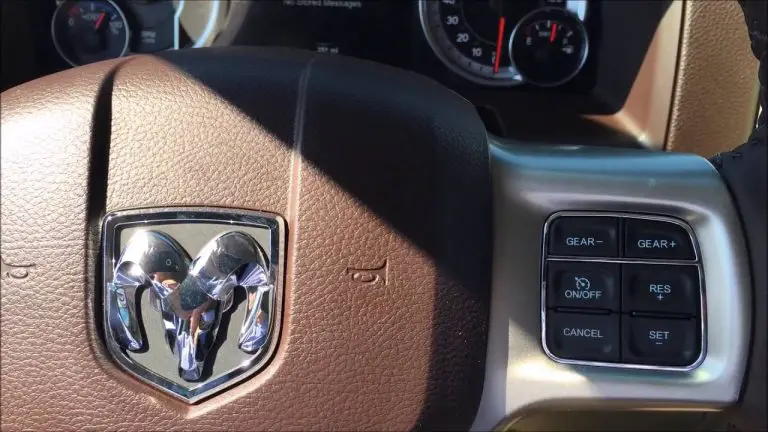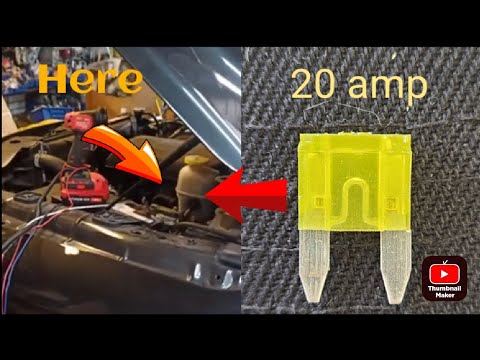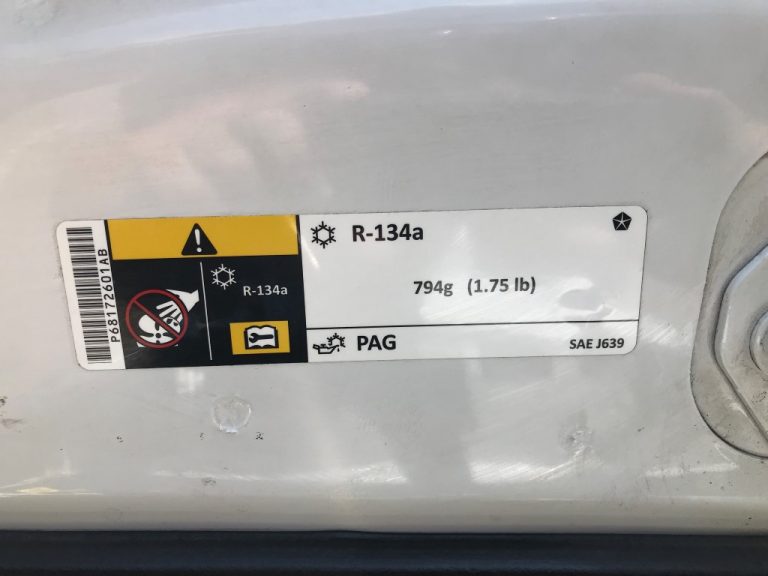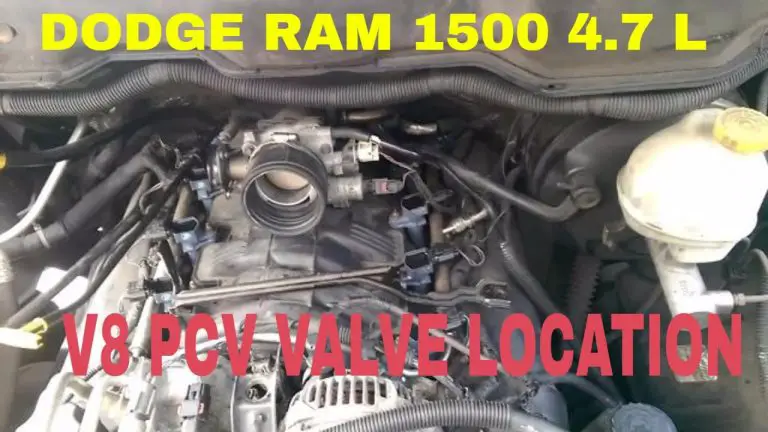5.7 Hemi Low Oil Pressure at Idle: Troubleshooting Tips
Experiencing low oil pressure at idle could be a result of system leaks, low oil levels, oil consumption by the engine, or a clogged/poor-quality oil filter. To increase oil pressure at idle, consider changing your oil, upgrading to a lifetime oil filter, cleaning out the oil pan, checking the oil pump, and inspecting the engine.
Low oil pressure at idle is commonly caused by the oil level dropping below the minimum dipstick line due to factors like piston ring wear and seal leaks. It is essential to address this issue promptly to prevent further damage to the engine.
Possible Causes Of Low Oil Pressure At Idle
Possible causes of low oil pressure at idle in a 5. 7 Hemi engine could be a system leak, low oil level, engine oil consumption, or a clogged or poor-quality oil filter preventing proper oil flow. To increase oil pressure at idle, you can change the oil, upgrade to a lifetime oil filter, clean the oil pan, check the oil pump, and inspect the engine.
Clogged Or Poor-quality Oil Filter
A clogged or poor-quality oil filter can be one of the main culprits behind low oil pressure at idle. The oil filter plays a crucial role in maintaining oil pressure by removing impurities and contaminants from the oil before it circulates through the engine. However, over time, the filter can become clogged with debris, reducing its effectiveness and preventing enough oil from reaching the internal engine parts.
If your oil filter is clogged or of poor quality, it’s important to replace it with a high-quality, lifetime oil filter. Upgrading to a better oil filter can help ensure that a sufficient amount of clean oil reaches the engine, restoring proper oil pressure at idle.
System Leaks Or Oil Consumption
Another possible cause of low oil pressure at idle is a system leak or excessive oil consumption. A system leak can occur due to damaged gaskets, seals, or oil lines, resulting in oil seepage and loss of pressure. Similarly, if the engine is consuming oil, the oil levels may drop, compromising the oil pressure.
It’s important to regularly inspect the engine for any signs of leaks, such as oil spots on the ground or oil stains on engine components. Addressing these leaks promptly and repairing any worn-out gaskets or seals can help prevent low oil pressure at idle. Additionally, keeping an eye on the oil consumption and topping up the oil levels as needed can also contribute to maintaining adequate oil pressure.
Low Oil Level When Warm
Low oil pressure at idle can also be a result of the oil level dropping below the minimum dipstick line when the engine is warm. This can occur even if you’ve recently had an oil change. Over time, engines may burn oil more quickly due to factors such as piston ring wear and seal leakage.
Regularly checking the oil level and ensuring it is within the recommended range when the engine is warm can help prevent low oil pressure. If the oil level is low, adding the necessary amount of oil can help restore proper oil pressure at idle.
In conclusion, low oil pressure at idle can be caused by a clogged or poor-quality oil filter, system leaks or excessive oil consumption, as well as low oil levels when warm. By addressing these issues promptly and taking preventive measures, such as regular oil changes, using high-quality oil filters, and monitoring oil levels, you can help maintain optimal oil pressure in your engine.
Checking And Diagnosing Low Oil Pressure
Experiencing low oil pressure at idle can be a cause for concern and may indicate underlying issues with your engine. It’s important to promptly identify and diagnose the cause of low oil pressure to prevent any potential damage to your vehicle. In this section, we will discuss the various steps to check and diagnose low oil pressure.
Checking The Oil Level And Quality
The first step in diagnosing low oil pressure is to check the oil level and quality. Maintaining the correct oil level is crucial for the engine to function properly and maintain optimal oil pressure. Here’s how you can check the oil level:
- Park your vehicle on a level surface and turn off the engine.
- Locate the oil dipstick, usually with a bright handle, and pull it out.
- Wipe the dipstick clean with a cloth or paper towel.
- Reinsert the dipstick into the oil reservoir fully and then pull it out again.
- Check the oil level indicated on the dipstick. It should be between the minimum and maximum markings.
In addition to checking the oil level, it’s essential to assess the quality of the oil. High-quality oil ensures proper lubrication of the engine components, which helps maintain optimal oil pressure. Look for any signs of contamination, such as a milky appearance, excessive sludge, or particles. If the oil appears dirty or contaminated, it’s recommended to change it with the appropriate oil type and viscosity as specified by your vehicle manufacturer.
Inspecting The Oil Filter
The oil filter plays a vital role in maintaining oil pressure by removing impurities and debris from the oil. An old or clogged oil filter can restrict oil flow and lead to low oil pressure. To inspect the oil filter, follow these steps:
- Locate the oil filter, usually positioned near the engine oil pan.
- Using an appropriate wrench, loosen the oil filter and carefully remove it from its housing.
- Inspect the filter for signs of debris, metal shavings, or clogging.
- If the filter appears dirty or clogged, it’s recommended to replace it with a new one from a reputable brand.
Regularly replacing the oil filter during routine maintenance can help ensure optimal oil pressure and engine performance.
Evaluating For Any Oil Leaks
Oil leaks can significantly impact oil pressure levels. Inspecting your engine for any signs of oil leaks is crucial in diagnosing low oil pressure. Here’s what you can do:
- Visually inspect the engine, paying close attention to gasket areas, seals, and connections.
- Look for any signs of oil residue, drips, or puddles around these areas.
- If you notice any leaks, it’s important to address them promptly. Depending on the severity of the leak, repairs may involve replacing gaskets, seals, or other components.
Identifying and fixing oil leaks can help restore proper oil pressure and prevent any long-term damage to your engine.
Identifying Oil Consumption Issues
Excessive oil consumption can lead to low oil levels and subsequently low oil pressure. If your engine is consuming oil at a high rate, it’s essential to identify and address this issue. Here are a few signs to look for:
- Regularly topping off the oil level between oil changes
- Visible smoke from the exhaust pipe
- Oil stains or residue around the engine
If you notice any of these signs, it’s recommended to consult a professional mechanic to diagnose and address the oil consumption problem.
In conclusion, checking and diagnosing low oil pressure at idle requires a systematic approach. By regularly checking the oil level and quality, inspecting the oil filter, evaluating for any oil leaks, and identifying oil consumption issues, you can take the necessary steps to diagnose and resolve low oil pressure problems.
Fixing Low Oil Pressure At Idle
Experiencing low oil pressure at idle with your 5. 7 Hemi? This could be caused by a system leak, engine oil consumption, or a clogged/poor quality oil filter. To increase oil pressure, consider changing the oil, upgrading to a lifetime oil filter, cleaning the oil pan, and checking the oil pump and engine.
Low oil pressure at idle can be a concerning issue for owners of vehicles with a 5.7 Hemi engine. However, there are several effective methods to fix this problem and ensure optimal engine performance. In this post, we will explore five solutions that can help you increase oil pressure at idle and maintain the health of your engine.Changing The Oil Regularly
Regular oil changes play a crucial role in maintaining adequate oil pressure, especially at idle. Over time, oil can become contaminated with dirt, debris, and other contaminants that hinder its flow through the engine. This can lead to low oil pressure at idle.
By changing your oil at the recommended intervals specified by the vehicle manufacturer, you can ensure that the oil remains clean and free from any substances that may obstruct its flow. Additionally, using the right type and viscosity of oil for your engine is equally important.
Upgrading To A Lifetime Oil Filter
The oil filter is responsible for capturing impurities and particles in the oil, preventing them from circulating through the engine. However, over time, conventional oil filters can become clogged and restrict the flow of oil, resulting in low oil pressure at idle.
Consider upgrading to a lifetime oil filter that offers superior filtration capabilities. These filters are designed to last longer and provide better protection against contaminants, ensuring that your engine receives a steady flow of clean oil, even at idle.
Cleaning Out The Oil Pan
The oil pan collects the oil that circulates through the engine. Over time, sludge and debris can accumulate in the oil pan, obstructing the oil pickup tube and impeding oil flow. This buildup can cause low oil pressure, particularly at idle.
Cleaning out the oil pan periodically can help remove any accumulated sludge and debris, allowing for unrestricted oil flow. It is recommended to consult your vehicle’s service manual or a professional mechanic for guidance on the proper procedure to clean the oil pan effectively.
Inspecting And Fixing The Oil Pump
The oil pump is responsible for pressurizing and circulating the oil throughout the engine. A malfunctioning or worn-out oil pump can result in low oil pressure at idle. Therefore, it is important to inspect the oil pump for any signs of damage or deterioration.
If the oil pump is found to be faulty, it may need to be repaired or replaced. Consult a qualified mechanic to perform a thorough inspection and determine the best course of action to fix any issues with the oil pump and restore proper oil pressure at idle.
Checking And Repairing Any Engine Issues
In some cases, low oil pressure at idle may be indicative of underlying engine problems. These can include issues with worn-out bearings, faulty piston rings, or leaking seals that lead to oil consumption and decreased oil pressure.
It is crucial to address any engine issues promptly to prevent further damage and restore optimal oil pressure at idle. Engage the services of a qualified mechanic who can diagnose and repair any engine-related problems properly.
By implementing these solutions, you can effectively fix low oil pressure at idle for your 5.7 Hemi engine. Remember to prioritize regular oil changes, upgrade to a lifetime oil filter, clean out the oil pan, inspect and fix the oil pump, and address any engine issues promptly. By doing so, you can ensure optimal engine health and performance.
Maintenance Tips To Prevent Low Oil Pressure
Low oil pressure at idle can be a common issue for 5.7 Hemi engines. However, with regular maintenance and proper care, you can prevent low oil pressure and ensure the longevity of your engine. Below are some essential maintenance tips to keep your oil pressure optimal:
Regular Oil Changes
Regular oil changes are crucial for maintaining proper oil pressure. Over time, oil breaks down, loses its viscosity, and becomes less effective at lubricating the engine components. To prevent low oil pressure, make sure to change your oil according to the manufacturer’s recommendations. Typically, oil changes are required every 3,000 to 5,000 miles or every 6 months.
Using High-quality Oil And Filters
The quality of oil and filters used is equally important in maintaining optimal oil pressure. Using high-quality oil that meets or exceeds the manufacturer’s specifications ensures that the engine is properly lubricated. Additionally, investing in a high-quality oil filter is essential as it effectively filters out impurities and prevents clogs that can restrict oil flow.
Monitoring Oil Levels And Consumption
Regularly monitoring your oil levels is crucial in preventing low oil pressure. Check your oil levels at least once a month using the dipstick. If you notice a significant drop in oil levels between oil changes, it may indicate an underlying issue with oil consumption. Excessive oil consumption can lead to low oil pressure, so it’s important to address it promptly.
Regular Inspection Of Engine Components
Performing regular inspections of your engine components is essential for preventing low oil pressure. Check for any signs of leaks, such as oil spots under the vehicle. Inspect the oil pan, oil pump, and other engine components for any signs of damage or wear. Addressing any issues promptly can help maintain proper oil pressure and prevent further damage to the engine.
By following these maintenance tips, you can prevent low oil pressure at idle and ensure the optimal performance of your 5.7 Hemi engine. Regular oil changes, using high-quality oil and filters, monitoring oil levels, and inspecting engine components are key to keeping your engine running smoothly for years to come.

Credit: www.amazon.com
Frequently Asked Questions For 5.7 Hemi Low Oil Pressure At Idle
What Causes Low Oil Pressure Only At Idle?
Low oil pressure only at idle could be caused by a system leak, low oil level, or a clogged/poor quality oil filter. It might also indicate that the engine is consuming oil. To increase oil pressure at idle, change the oil, upgrade to a lifetime oil filter, clean the oil pan, and check the oil pump and engine for any issues.
How Do I Increase The Oil Pressure At Idle?
To increase oil pressure at idle, you can try the following steps: 1) Change your oil, as dirty oil can cause low pressure. 2) Upgrade to a lifetime oil filter to maintain oil pressure. 3) Clean out the oil pan to ensure proper oil flow.
4) Check the oil pump for any issues. 5) Lastly, make sure to check the engine for any underlying problems.
What Is The Most Common Reason For An Engine To Have Low Oil Pressure?
The most common reason for low oil pressure in an engine is a low oil level. This can be caused by a leak or engine consumption. Additionally, a clogged or poor-quality oil filter can prevent sufficient oil from reaching internal engine parts.
What Should A 5.7 Hemi Oil Pressure Be At Idle?
The 5. 7 Hemi oil pressure at idle should be around 22 psi.
Conclusion
To conclude, experiencing low oil pressure at idle can be concerning, but there are several possible causes and solutions. It could be due to a system leak, low oil level, oil consumption, or a clogged/poor quality oil filter. To increase oil pressure, consider changing the oil, upgrading to a lifetime oil filter, cleaning the oil pan, and checking the oil pump and engine.
Remember to regularly monitor oil levels and address any issues promptly to maintain your engine’s performance and longevity.






